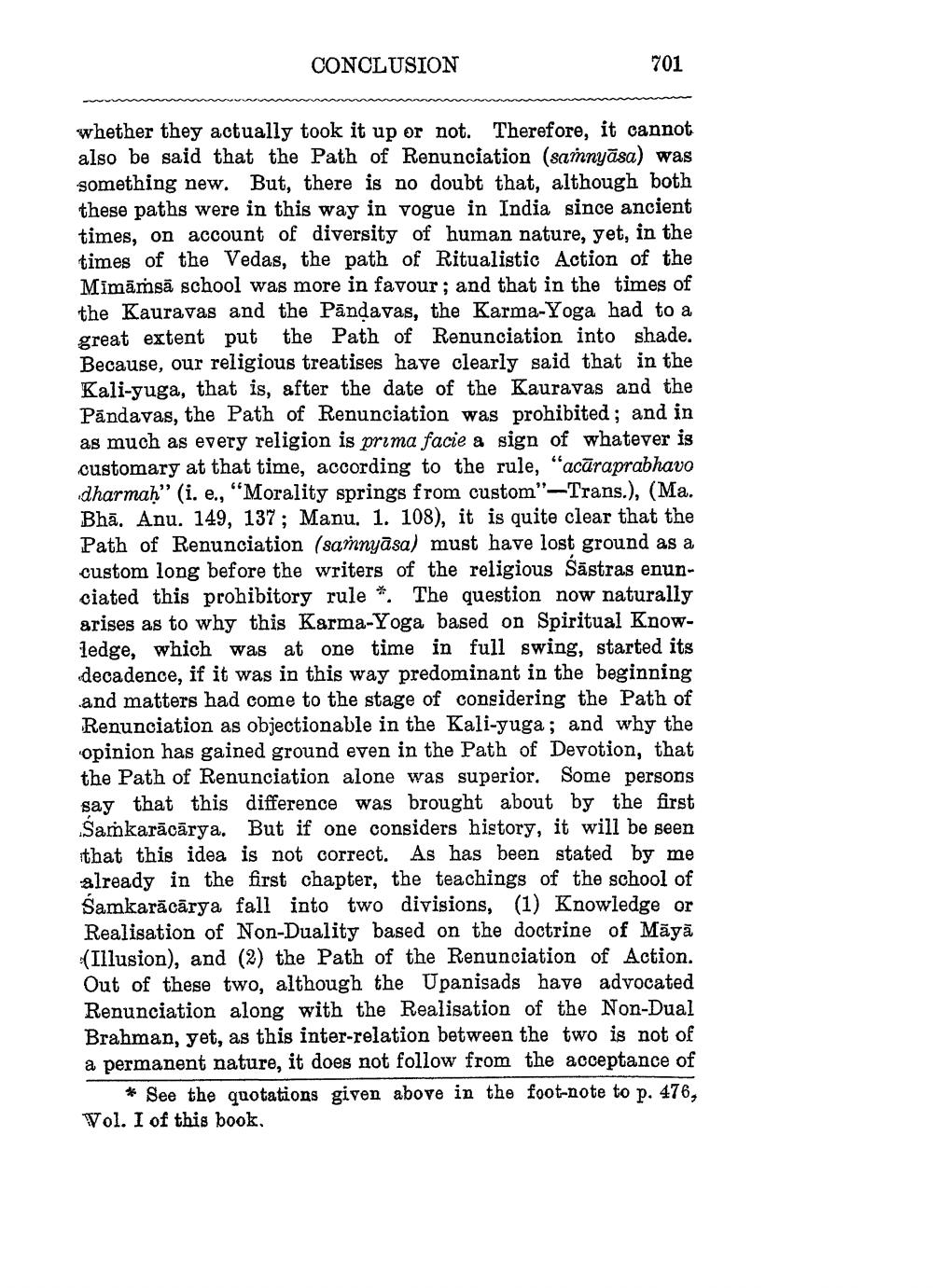________________
CONCLUSION
701
whether they actually took it up or not. Therefore, it cannot also be said that the Path of Renunciation (sainyāsa) was something new. But, there is no doubt that, although both these paths were in this way in vogue in India since ancient times, on account of diversity of human nature, yet, in the times of the Vedas, the path of Ritualistic Action of the Mimāṁsā school was more in favour; and that in the times of the Kauravas and the Pāndavas, the Karma-Yoga had to a great extent put the Path of Renunciation into shade. Because, our religious treatises have clearly said that in the Kali-yuga, that is, after the date of the Kauravas and the Pāndavas, the Path of Renunciation was prohibited ; and in as much as every religion is prima facie a sign of whatever is customary at that time, according to the rule, "acūraprabhavo dharmaḥ” (i. e., “Morality springs from custom"-Trans.), (Ma. Bhā. Anu. 149, 137; Manu. 1. 108), it is quite clear that the Path of Renunciation (sarnyāsa) must have lost ground as a custom long before the writers of the religious Sāstras enunciated this prohibitory rule *. The question now naturally arises as to why this Karma-Yoga based on Spiritual Knowledge, which was at one time in full swing, started its decadence, if it was in this way predominant in the beginning and matters had come to the stage of considering the Path of Renunciation as objectionable in the Kali-yuga; and why the opinion has gained ground even in the Path of Devotion, that the Path of Renunciation alone was superior. Some persons say that this difference was brought about by the first Samkarācārya. But if one considers history, it will be seen that this idea is not correct. As has been stated by me already in the first chapter, the teachings of the school of Samkarācārya fall into two divisions, (1) Knowledge or Realisation of Non-Duality based on the doctrine of Māyā (Illusion), and (2) the Path of the Renunciation of Action. Out of these two, although the Upanisads have advocated Renunciation along with the Realisation of the Non-Dual Brahman, yet, as this inter-relation between the two is not of a permanent nature, it does not follow from the acceptance of
* See the quotations given above in the foot-note to p. 476, Vol. I of this book,




